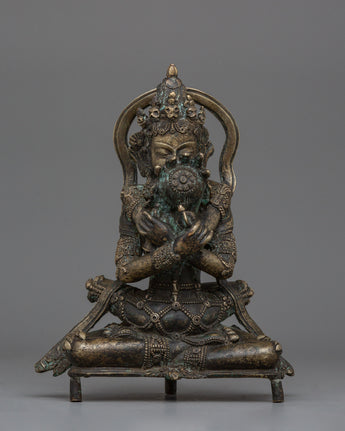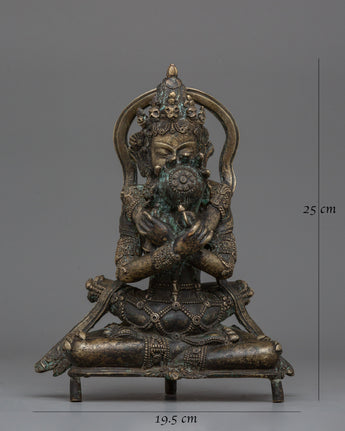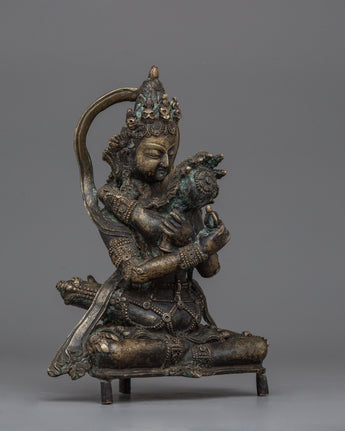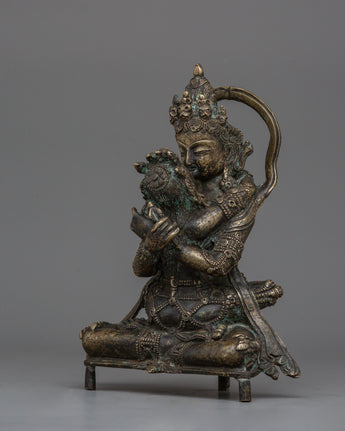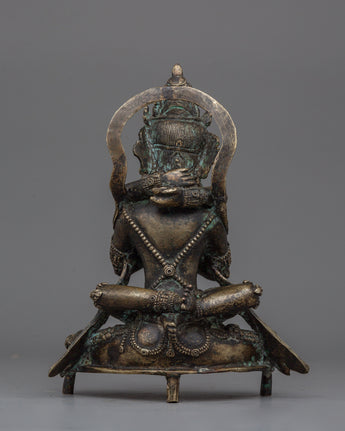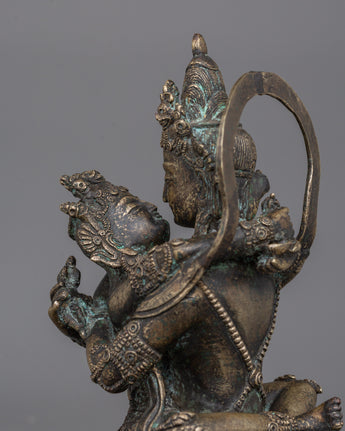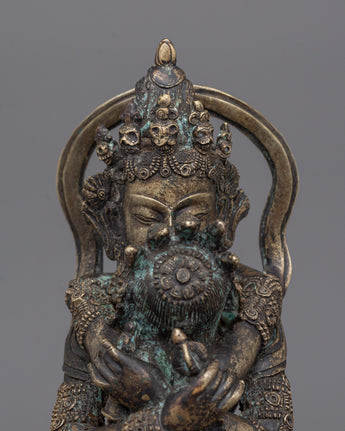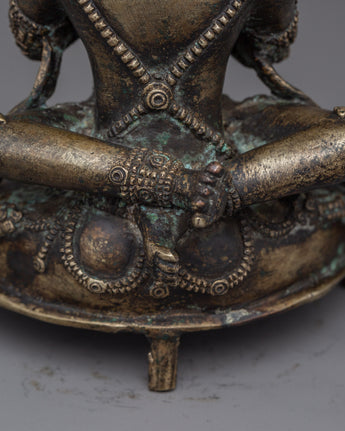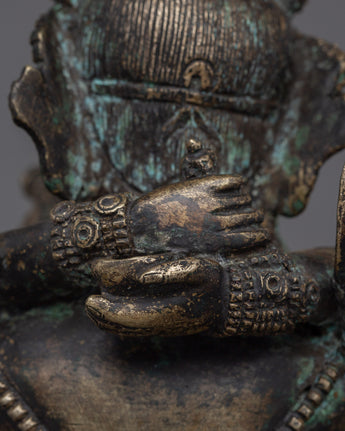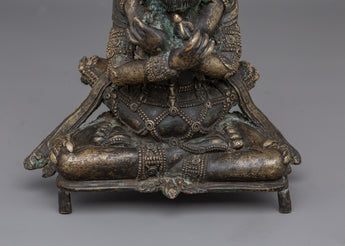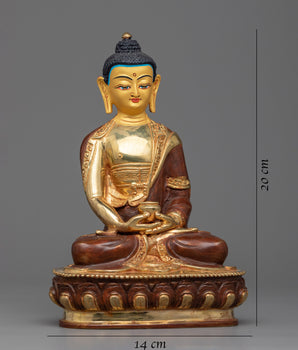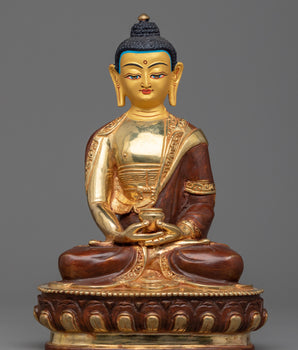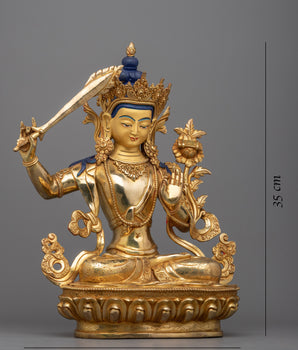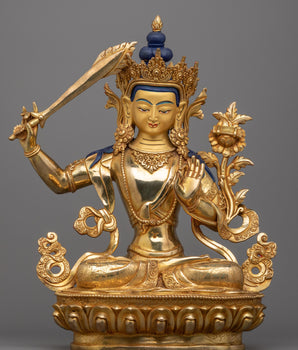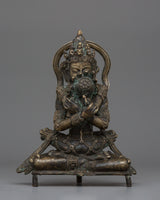
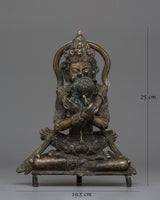
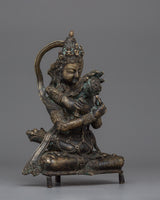
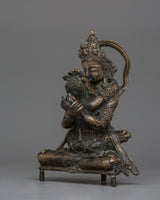
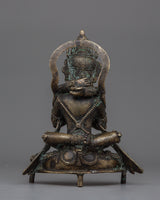
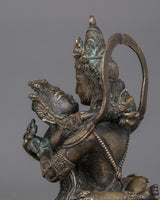
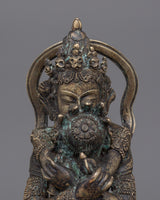
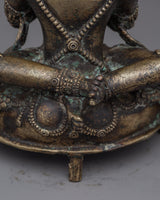
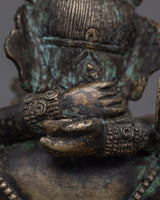
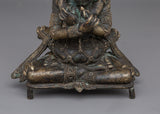
Chakrasamvara Buddhist Statue With His Consort | Sacred Buddhist Art for Meditation and Prayer Spaces

100% AUTHENTIC

HANDMADE

FREE SHIPPING
Chakrasamvara Buddhist Statue With His Consort
-------------------------------------------
Size: 25 cm (Height) x 19.5 cm (Width)
Weight: 3.13 kg
Materials: Bronze Body, Antique Finish
-------------------------------------------
About Our Statue
The Chakrasamvara Buddhist Statue is a beautifully sculpted depiction of one of the most important deities in Vajrayana Buddhism. This handcrafted sculpture, made of bronze with an antique finish, has precise craftsmanship and exudes heavenly vitality. The statue shows Chakrasamvara in union with his spouse Vajravarahi, representing Buddhist philosophy's balance of knowledge and compassion. The figure, 25 cm tall and 19.5 cm wide, is inspired by ancient iconography, featuring exquisite jewelry, holy decorations, and significant hand motions. The antique bronze finish adds to its vintage charm, making it a valuable addition to any place dedicated to spiritual practice or art appreciation.
Chakrasamvara is a key character in Tibetan Buddhist Tantric traditions, frequently connected with overcoming ignorance and attaining enlightenment. The statue's numerous arms contain ceremonial artifacts representing different parts of Buddhist teachings and practices. The presence of his partner, Vajravarahi, emphasizes the tantric road to enlightenment and the unification of technique and insight. The statue, weighing 3.13 kg, is solid and well-balanced, making it ideal for exhibition in meditation rooms, personal altars, or Buddhist art collections. This handcrafted object is more than just a beautiful relic; it also has significant religious and cultural value, exhibiting Himalayan craftsmanship's artistic traditions.
Introduction to Chakrasamvara
A central figure in Vajrayana Buddhism, notably in the Kagyu, Sakya, and Gelug schools of Tibetan Buddhism, is Cakrasamvara, also known as Heruka. He is frequently seen in union with Vajravarahi, representing the harmony of knowledge and compassion. The ultimate tantric techniques are embodied in Cakrasamvara, who aids practitioners in overcoming the dualistic nature of everyday perception and achieving joyful enlightenment. Devotees can develop a profound insight into the interdependence of all things and ultimately reach the state of Buddhahood by including the practice of Cakrasamvara in their spiritual path.
How do take care of your statues?
• Place them at room temperature, avoiding direct sunlight.
• Make sure that the area where your statue is placed is completely free of moisture and dust.
• Place it at the highest place on your altar after being consecrated by Lama/monks. The best practice is to keep them covered inside a glass cabinet.
• Do not use your bare hands or any objects with a rough surface to wipe the face. Directly touching with the bare hand objects can smudge the face, leaving scratches.


